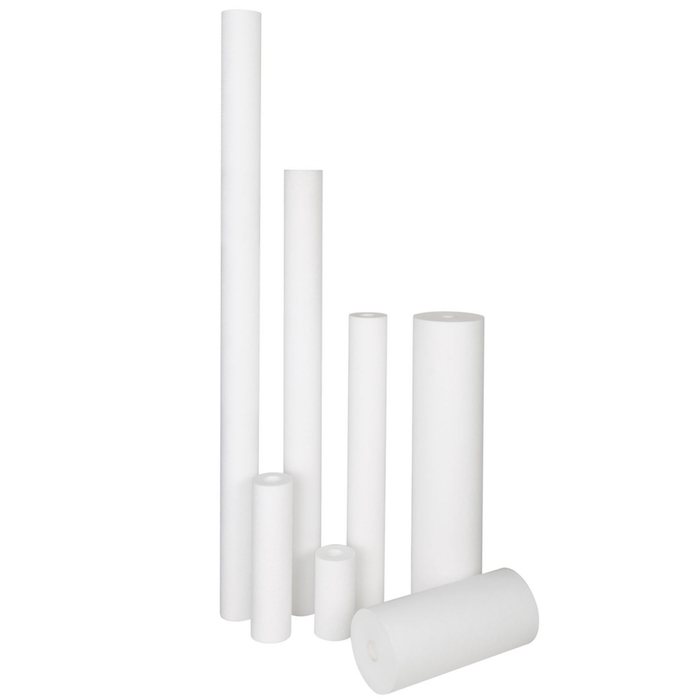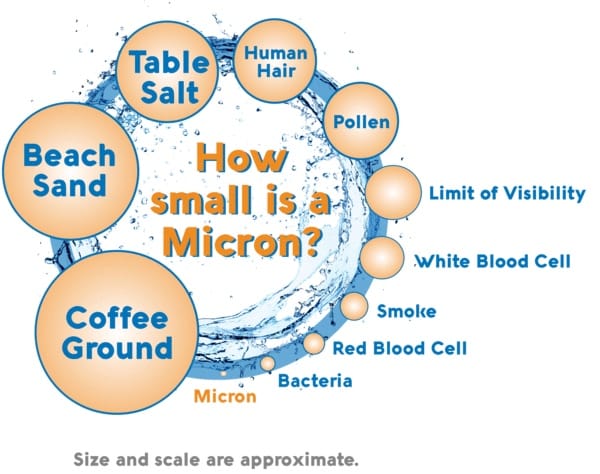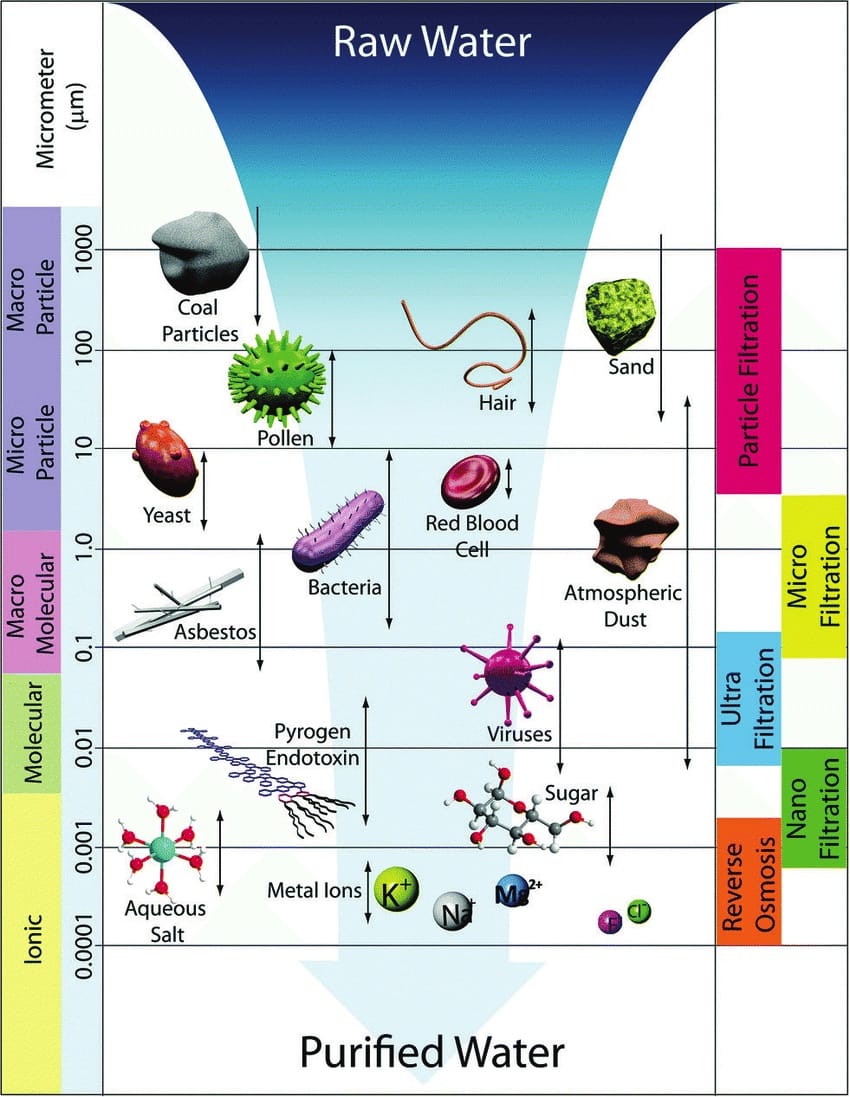What is a micron filter?
Micron filters remove dirt, debris, and even microscopic particles from water. The pore size of a filter cartridge is measured in microns. The smaller the micron rating, the finer the particulate removed. Which size micron filter you need depends on the size of the smallest particle that needs filtering from your water. A 5-micron filter, for example, removes particles as small as 5 microns. Anything smaller passes through the pores. Sediment filters are the most common type of micron filter. Sediment filters are similar to screen doors that allow air in and keep bugs out, except the debris blocked by the filter is microscopic.
A micron is a unit of measurement describing the pore size of a micron water filter. Sediment filters remove different contaminants depending on their micron rating. John Woodard, our Master Water Specialist, explains the difference between a .1-micron, .5-micron, 5-micron, or 10-micron filter.
How small is a micron?
A micron is short for one micrometer, or one-millionth of a meter. The pores of a 20-micron filter are double the size of a 10-micron filter and best for large debris. Any particle smaller than 35 microns is too small to see without a microscope. The particles filtered from a 25, or 20, or 10 are invisible to the naked eye.
How many microns should your filter be?
Finding the right micron filter depends on your region and water supply. For example, dirt is super fine in Thessaloniki, so you may need a 1-micron filter or smaller to capture all the fine particulate. Keep in mind that each well or city water supply within a certain region varies.
You’ll also want to consider what you’re trying to remove from the water. Cysts are parasitic bacteria common in many water supplies that can make you seriously ill. Most city water treatment plants make sure the water is free of cysts, but it’s possible for cysts and other bacteria to get into the city water supply. It’s a good idea to use a point-of-use micron filter, typically 1 micron or less, tested and certified for cyst reduction.
Nominal vs absolute micron filters
Absolute filters have a pore size that measures its exact micron rating. Nominal filters have pores approximately the size of there micron rating. For example, a nominal 5-micron filter could allow a small percentage of 5-micron debris through. An absolute filter is over 95% efficient, which means it shouldn’t allow any particles the size of its micron rating through. In an instance where you absolutely have to get a certain level of debris out of the water, you should choose an absolute filter over a nominally rated filter. Most micron filters are nominal, but absolute filters are available.
How does pressure drop influence a micron filter?
In micron filters, the pressure drop determines when it’s time to change the filter. Pressure drop refers to the difference between the incoming filter pressure versus the pressure output. Anytime water flows through media, like in a melt-blown filter or a resin-bonded filter, the water experiences some restriction as it tries to pass through. The pressure drop increases when the filter fills with debris. An increase in pressure drop is a good indication that the filter has reached maximum capacity.





